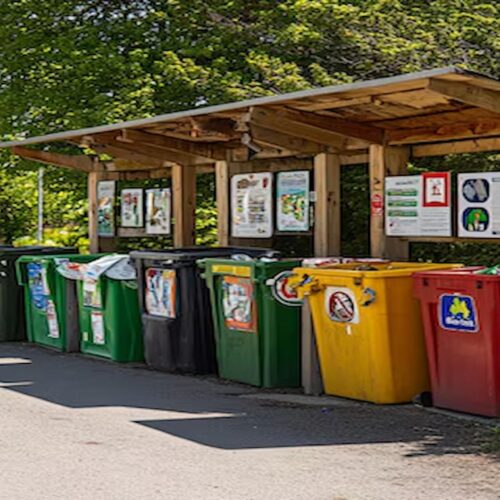Writing about trending topics can reach a wider audience and spark ideas for future content. However, it is important to find the right balance for your blog. For example, if you share daily content to keep readers updated on the latest developments in your niche, most of your content will be timely, but you still need some evergreen elements to help you generate long-term traffic and diversify from having to post every day. Even if your topic remains consistently relevant for years, you will still want to update here and there to keep the quality and relevance of your content high so that your content continues to generate organic traffic. While this topic may seem relevant since new updates and changes are not uncommon in the world of SEO, content can always be updated and kept up to date to keep it up to date. This article has consistently received a consistent number of page views and has not been updated since it was released many years ago.
It continues to be relevant even after the publication date, and search traffic grows over time. Simply put, it is the content that remains relevant, does not depend on time and continues to attract traffic for a long time after its first publication. Every brand tries to create this type of content on a regular basis because of the benefits it brings. Contains definitions of each content marketing term, as well as helpful links and videos. If you’d like to further learn how to use content to grow your business, join our mailing list and receive emails every fortnight about the best marketing and social media strategies for entrepreneurs. Today we’re going to explain the basics of evergreen articles, how to write evergreen content, and why incorporating evergreen posts into your blog strategy is important for killer content marketing.
Evergreen content is content that stays relevant long after being published and drives traffic to your blog year after year (it persists over time like an evergreen tree). As its namesake suggests, evergreen content is any content that remains relevant and interesting to readers, regardless of the weather. If you create evergreen content on your blog today, your readers will find it relevant now, or years from now, when they return to it. To ensure the longevity of your digital content, make sure it’s evergreen, vibrant, and vibrant. Evergreen trees stay green and fresh all year round, are resilient and durable. Evergreen’s articles remain relevant because they offer detailed information that is relevant to user research on key topics. While relevant or time-sensitive content loses its relevance over time, evergreen content is always “fresh” and attracts new readers for months or even years after its original release date. Even though evergreen content generates constant traffic to your website, the best content marketing strategy is based on a mix of current affairs articles and long lasting evergreen posts. Timely articles are still in high demand for varying periods of time and can still generate a lot of traffic to your site. Likewise, the general wildlife photography guide and the presidential election page will last longer than the specific annual content. It is also possible that some themes will not be evergreen, and there is nothing wrong with that. For example, a simple and specific topic like the Beginner’s Guide to Facebook Advertising will have more potential to become evergreen content than a broad topic like All Types of Advertising. The trick with this content is to find a topic that’s broad enough to be evergreen, yet specific enough to provide actionable steps that readers can take right now. Because even though the themes may be evergreen, the specifics of the content are likely to change over time. Even content that focuses on current fashion, design, or marketing trends that are relevant at a particular moment is not evergreen. As with current trends, content dedicated to specific seasons or holidays is also not evergreen. And while some of your content may be evergreen, there probably isn’t an evergreen strategy. Regardless of the size of your business, you can create a content strategy that works within your vision to drive growth and resilience through the ups and downs of your operating lifecycle. If you are in the business of content creation, no matter how you monetize your blog, at least some of your time should be devoted to creating evergreen elements aimed at bringing a steady stream of readers to your site.
Ideally, you will create such a relevant piece and promote longevity in the rankings so that others will see the value and perhaps a backlink or link to a relevant piece of your site’s content, even on their site when it makes sense on their calendar. … This is a win for everyone, as part of your site will tell the site’s brand story while your article continues to grab attention and maintain higher search engine rankings. Companies that create evergreen, time-sensitive, always-on articles can easily be rewarded with high ratings, more leads, loyal readers, and increased traffic.
Therefore, you should not waste time in vain and use the knowledge gained when developing a content strategy. The first step should be understanding what content works for your audience / clients and developing it. So the next step is to ask if you can zoom out for a quick win.
It is very important to know how to create these high quality evergreen blog posts. Regardless of your niche, you can make a list of blogging mistakes to avoid as this type of content will always be useful to your readers. Things like guides, your customers’ FAQs, general concepts in your industry, and product reviews can create excellent evergreen content. Companies use walkthroughs, tutorials, videos, how-tos, checklists, and podcasts for newbies and pros alike to drive traffic to their websites, convert visitors to leads, and build authority and moreover, you can hire a content creation company to get the best results .
A lot depends on the ability of marketers to write blog posts that will always be in demand – useful content that is timeless. The best content marketing strategy involves a mix of long evergreen posts and more specialized articles. You need a mix of timeless and timely content to keep your readers engaged.
To keep your content evergreen, you need to associate the right format with the right theme. But for that to happen, you first need to determine what content is evergreen for your particular market. Hence, you should strive to find niche content ideas that are relevant and for which you have a reasonable chance of ranking.
This is only an abridged version, but if you want a more detailed reading, here’s a post on how to do keyword research. This tool helps you find keywords that explore all aspects of a topic, which is really useful for informative content such as “What is” content or definitive guides. A good content marketing strategy involves shaping topics around issues that arise at different levels of the buying journey you find content that you know will be of interest to your readers and then link them to it. When curating content, the relationship with your audience isn’t necessarily built by the content itself, but rather by the fact that you become their personal news source. Just like you love getting quality newsletters to curate your content, you can bet your community loves getting relevant, quality content right into their inbox without having to search for it yourself.
Plus, you get to see phenomenal content in your niche, so you can create your own that reflects the main trends in your vertical. Follow the 5 steps in this post for awesome, carefully curated content to share with the world.
Since you’ve researched all the best content to include in your curated content, you can simply share these resources on social media and save tons of time. Most of the content you post is generated internally, but using specially curated content is a great way to fill in the gaps on your social media calendar if needed. Even when you lack content, you can still share others’ content to maintain your posting schedule, as long as it is of good quality. You can empower your customers’ messages and images, answer questions, and let their content drive yours.
By following the steps above, you can easily curate your content, understand your audience, and use the right tools and strategies to get the best results. Content curation means finding content that your audience deems important or useful and modifying it in a way that serves both your organization and your audience. To select content your audience will love, start by browsing email newsletters, searching social media, tracking hashtags or other relevant keywords, and signing up for Google Alerts for relevant terms. From here, you can create new content that is relevant to your overall strategy. Curating content and collecting information related to specific topics are good ways to supplement original works. When choosing the right content, please share information that suits your audience and market segment. Content planning is about finding content relevant to your audience from various sources and distributing it strategically through communication channels. Content planning is about finding quality content and presenting it to your social media followers in a way that adds value.
If done well, content management can make your brand a trusted source of valuable information, thereby bringing more potential customers and conversions. Think of content planning as a way to meaningfully help your audience and engage in conversations. Although content creation is your original work with a unique perspective, content planning requires you to add value to the established information through your opinions or interpretations of the work.
Sharing well-planned content on your social platforms is one of the best digital marketing strategies you can use in this digital age, and so much content is created and published every day. By choosing content and organizing it in a way that is easier to read and absorb, you can make your information useful to your target audience.
There’s great content out there, much of it consistent, relevant, high quality, and ready to go. Instead, strive to add real value to your readers by choosing the best content from a variety of sources. Make a list of people posting valuable content that is relevant to your audience so you can scroll through it whenever you’re looking for curation content.
You can also find influencers to quote or tweet in content curation tools to help you find relevant and popular content based on your searches. You can use industry-relevant keywords for an auto-updating content feed that you can use to create carefully curated posts. If that’s not up to the mark, you can edit content, customize it, and then share.
This will help you treat your audience as real people and let you think carefully about what types of well-curated content might be most useful to them. This is exactly what content planning can do for your brand; draw attention to your brand, giving you the opportunity to reach a wider and more engaged audience through your branded content. One of the main challenges is to find content that resonates with the target audience.
Simply put, you need to monitor how your audience is reacting to the content you share and optimize your efforts accordingly. When you share any content, there are a few things you need to know to know that you are sharing with the right people, have reliable sources, share high quality content, and how the content can help your audience. Whether you’re dealing with aspiring influencers bragging on Instagram or a famous person winking at your products, finding the right curation content can be a challenge. On the other hand, curating content correctly can be a very effective way to improve your overall strategy. On the one hand, content management enables you to achieve thought leadership by gathering the opinions of others who support your point of view and becoming a “channel” for people to listen to suggestions on specific topics. One of the main benefits of sharing featured content (not just content you create) is that featured content can help you keep up with the demands of social media algorithms and the frequency of content you need. The easiest way to schedule well-curated posts is to create them in real-time while you are looking for valuable content online, using free tools such as Hootlet to create and schedule posts directly from your browser with just a few clicks.
In this post, we’ll take a look at other content curation tools that can help you find, collect, organize, and schedule content to publish. Curating is more than just re-sharing content, it’s a way to add value to your followers by highlighting your industry experience.
Choosing a curator for some or all of your blog content can lead to a lot of great posts very quickly. By focusing on high quality sources and building on material from existing articles, you can fill your blog while continuing to produce work that you can proudly share on your site. By going through the articles for a while and choosing the best ones, you can offer your readers a wide range of topics, and you won’t have to spend months creating high-quality content of this magnitude.
The key here is to focus on hot topics and find top-notch content created in that market segment. This is a great way to find high-quality content because trending topics will naturally attract industry leaders, who are always ready to follow trends and share their ideas. In fact, if there is a universal way to increase your online audience, it is to share high-quality content and compelling stories.
Most curated sites receive a constant stream of posts and posts, and you can easily find out which type of content is really resonating. Social signals are becoming more and more important in SEO, and curation helps you accumulate them.



